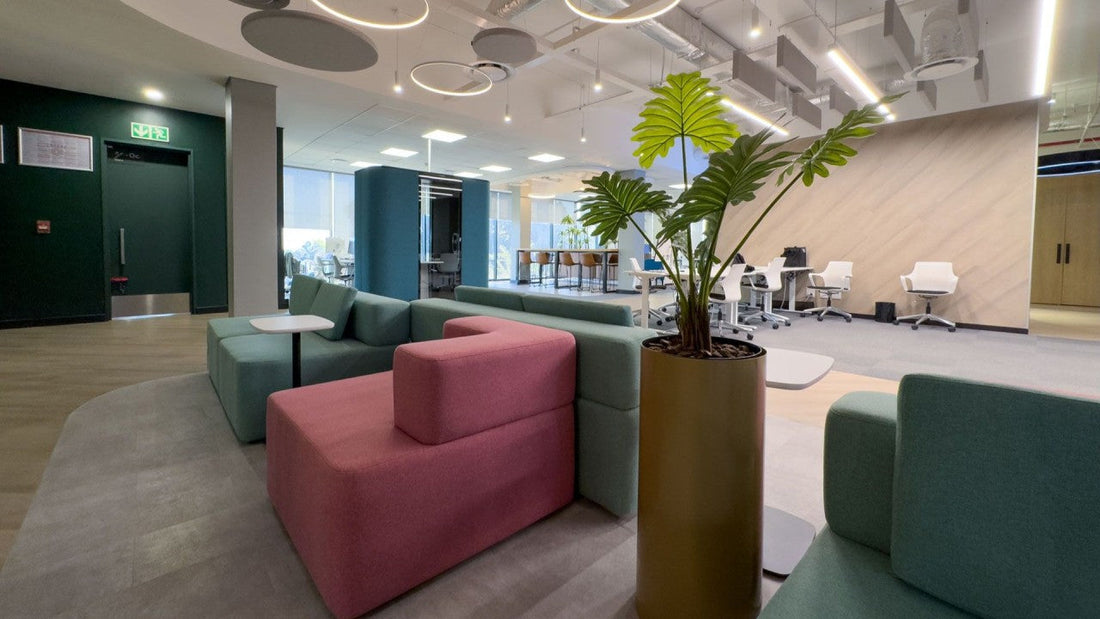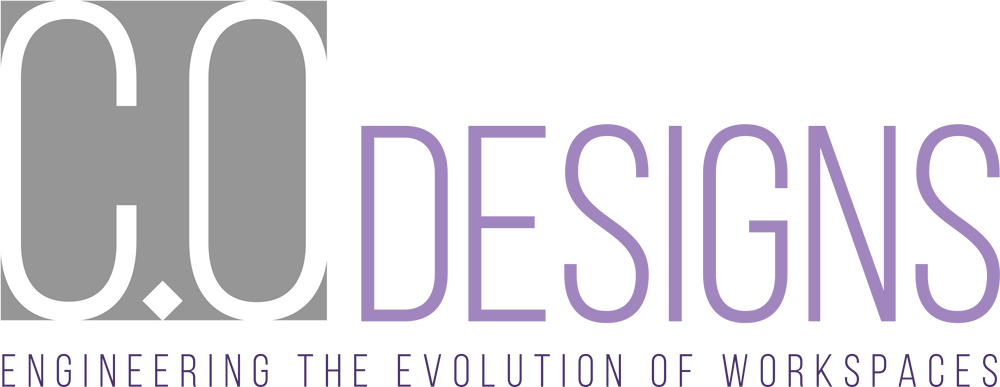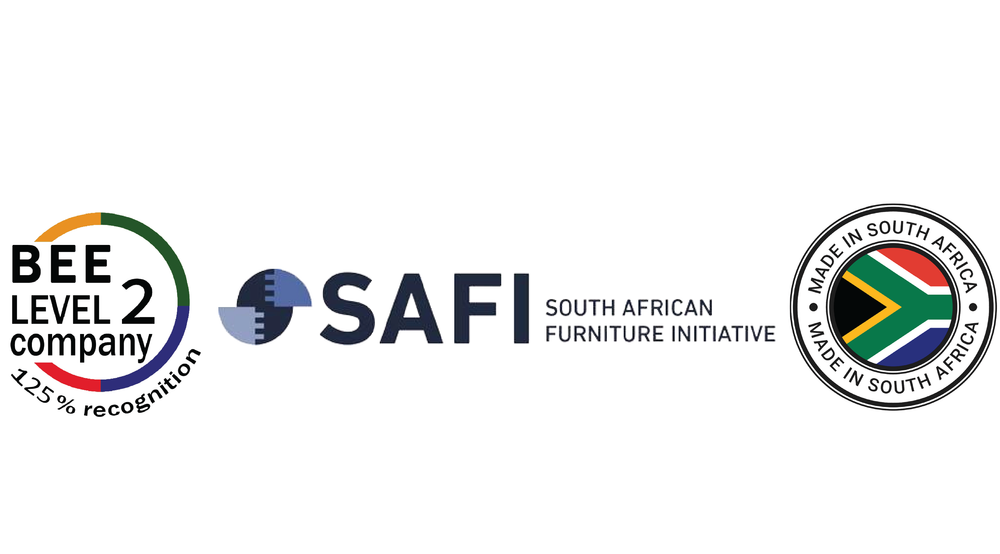
The Future of Desking: Shaping Tomorrow’s Hybrid Workspace
Share
By Rowan Michael de Villiers | C.O Designs
Modern workspaces are undergoing a profound transformation. For South Africa’s own C.O Designs – a leader in innovative office furniture from privacy pods to collaborative desking systems – the question isn’t if the traditional office desk will evolve, but how. As hybrid work becomes the norm and technology and sustainability take centre stage, the very concept of “desking” is being reimagined. In this thought leadership piece, we explore key trends shaping the future of desking in both South African and global contexts, and how they’re driving more flexible, healthy, and high-performing work environments.
Hybrid Work Models Redefine the Office’s Role
The rise of hybrid work – where employees split time between home and office – is fundamentally changing what we need from our offices. Globally, an overwhelming 81% of workers prefer either hybrid or fully remote arrangements . South Africa is no exception: long commutes and infrastructure challenges like load-shedding have made hybrid schedules a practical choice for many organizations . Fewer people in-office on a given day means companies are rethinking space. Large, dedicated desks for every individual are giving way to hot-desking and shared workstations that better match variable attendance. Offices are being optimized as hubs for collaboration and social connection to support the move towards privacy and productivity focused environments.
Importantly, the purpose of the office is shifting. When people do come in, it’s often for teamwork, creative sessions, or client meetings – things harder to do over Zoom. Workspace design is responding by carving out more collaboration-centric areas (think open lounges, brainstorming zones and project rooms) and fewer restrictive environments. At the same time, seamless integration of remote participants is a must. Meeting spaces are now outfitted with high-end video conferencing tech, interactive smart boards and fast Wi-Fi to connect those working from home with those on-site . The result is an office that acts as a flexible, hybrid-enabled hub – fostering culture and teamwork on office days, while supporting focus work and virtual collaboration the rest of the week.

Modular and Reconfigurable Furniture for Flexibility
With hybrid work and agile teams, flexibility is king. Workspaces today might host a full staff workshop one day and a half-empty floor the next. Enter modular and reconfigurable furniture. These are desks, tables, and partitions that can be easily moved, adjusted or recombined to suit the task at hand. Modern offices increasingly feature modular desking systems, movable walls, and multipurpose layouts that can be reconfigured overnight . For example, a set of individual desks might interlock into a conference table for a team meeting, or roll away entirely to open up space for an impromptu event.
Such adaptability isn’t just a nice-to-have – it’s becoming essential. Space-saving designs like foldable desks and multifunctional pieces allow companies to maximize limited floor space . Lightweight, mobile furniture on wheels makes it possible to switch from a quiet focus layout to a collaborative workshop layout with minimal effort. This ties closely to the principles of activity-based design, where an office is divided into zones for different activities (quiet solo work, group brainstorms, informal lounge, etc.) and employees choose a space that fits their current task. By using modular components, an activity-based workspace can continually evolve as needs change, rather than requiring costly renovations. The South African market has embraced this trend: many new offices in Johannesburg, Cape Town and beyond are opting for modular workstations and configurable interiors that let them adapt on the fly to project teams or fluctuating headcount . The ability to “shuffle the deck” of the office layout not only future-proofs the space, but also empowers employees with more control over their environment.
Sustainability at the Core of Office Design
Sustainability has moved from buzzword to baseline requirement in workplace design. As environmental awareness grows, companies worldwide, including in South Africa, are prioritising eco-friendly materials and green design in their office furniture . What does this look like in practice? It means using desks made from responsibly sourced wood or recycled materials, chairs upholstered in eco-conscious fabrics, and furniture manufactured through low-emission processes. Many organisations are also scrutinising the lifecycle of their office furnishings: durable, quality pieces that last longer reduce waste, and refurbishment or reupholstering services can extend the life of existing furniture. (Notably, some South African suppliers even offer to refresh older furniture with new fabrics or finishes instead of replacing it, cutting down on landfill waste.
In office planning, sustainability also extends to the overall space. Green building standards are influencing interiors, expect to see more energy-efficient lighting, solar panels on rooftops, and layouts that maximise natural light and ventilation. Aligning with South Africa’s broader sustainability goals, many local companies are opting for offices and furniture that have smaller carbon footprints . This might include using local manufacturers (reducing transport emissions) and choosing designs that can be disassembled and recycled at end-of-life. Even trends like biophilic design (bringing in plants, natural materials and nature-inspired forms) play a dual role: they improve employee well-being and signal an eco-friendly ethos. In short, the future of desking isn’t just about being flexible and high-tech – it’s also about being green. Businesses are increasingly aware that sustainable workspaces are key to attracting talent and clients, and C.O Designs continues to champion this by engineering products with sustainability in mind, from material selection to production methods.

Privacy Solutions for Focus and Comfort
The open-plan office revolution came with an unintended side effect: a serious lack of privacy. Anyone who’s tried to concentrate amidst ringing phones or hold a confidential call in a wide-open office knows the struggle. Now, as hybrid work brings people to the office for concentrated collaboration and frequent video meetings, the need to balance open and private spaces has never been greater. Employees and designers alike are seeking a better equilibrium between communal zones and places to work quietly without distractions .
One big trend in response is the rise of acoustic and privacy solutions. Think chic phone booths in the corner of an open floor, single-person focus pods, or “quiet rooms” where one can escape the office buzz. In fact, in a recent global survey by Steelcase, four of the top five features workers say are more important now than pre-pandemic all relate to privacy and individual focus – 61% of respondents cited general privacy as a growing need, 62% want single-person enclaves for virtual meetings, and 58% want workstations with partial enclosure for better focus. The message is clear: even in a collaborative culture, people perform best when they have the option to find solitude.
Modern office furniture is rising to the challenge. Companies are adding high-backed lounge chairs, movable modular screens and dividers, and sound-absorbing panels to carve out semi-private nooks on the fly. Fully enclosed privacy pods or booths have gone from novelty to near-necessity – these provide a soundproof retreat for phone calls, virtual meetings, or deep work, right within the open office . C.O Designs has been at the forefront here, engineering privacy pod solutions that offer quiet comfort without completely isolating users from the team. By incorporating soft acoustic materials, ventilation and power for devices, these pods create mini sanctuaries of focus in the busiest of offices.
Crucially, privacy isn’t just about acoustics; it’s also psychological. People need to feel they have a “home base” even in a flexible office. Yet many organisations adopting hot-desking have inadvertently made employees feel nomadic or “homeless” when they can’t find a personal spot . The future of desking will need to reconcile flexibility with personal space. Expect to see more reservable desks (so staff can claim a space when needed) and design strategies that give a sense of ownership – like lockers or personal storage at work, and defined quiet zones. By providing the means for privacy and personalization, tomorrow’s workplaces will ensure that even as we embrace open, dynamic layouts, everyone can find a place to focus and feel comfortable.

Ergonomics and Wellness Take Centre Stage
A forward-thinking workspace isn’t only flexible and tech-savvy – it’s healthy. The well-being of employees has become a top priority in office design, and nowhere is this more evident than in the furniture choices. In South Africa and globally, companies are investing in ergonomic excellence: desks and chairs that support the body’s natural posture, reduce strain, and even encourage movement . This isn’t just a matter of comfort – it’s directly tied to productivity and employee satisfaction. After all, workers spend a large portion of their day at their workstations, and an uncomfortable setup can lead to fatigue, back pain or repetitive strain injuries, not to mention drops in concentration.
The latest desking solutions therefore come with human health in mind. Height-adjustable sit-stand desks are becoming mainstream, allowing people to alternate between sitting and standing to improve circulation and reduce the negative effects of prolonged sitting. Ergonomic chairs with adjustable height, lumbar support and armrests help maintain proper posture and reduce back strain . Even accessories like monitor arms (to position screens at eye level), keyboard trays, and anti-fatigue standing mats are part of the holistic ergonomic toolkit. All these elements work together to minimise physical stress – a wise move for employers, since work-related discomfort and stress can lead to higher absenteeism and even mental health issues over time.
Beyond furniture adjustments, wellness-focused design encompasses lighting, air quality, and relaxation space as well. Natural light and views of greenery (or biophilic elements like indoor plants) can reduce stress and improve mood. Many South African offices are introducing breakout areas or quiet wellness rooms – spaces with comfortable seating, maybe some greenery or calming décor – where employees can take a breather. Some progressive workplaces even have in-house gyms or meditation areas. The guiding principle is simple: a healthy employee is a more engaged and productive employee. By providing ergonomic and wellness amenities in the office, companies also send a message that they value their people. This, in turn, helps draw staff back to the office in a hybrid world – because the experience there is designed to support their health, not compromise it. C.O Designs’ approach has always been rooted in this human-centric philosophy, ensuring our desking and seating solutions are not only robust and stylish, but also scientifically supportive of posture and comfort. In the future of work, ergonomics isn’t optional – it’s foundational.

Smart Technology Integration in Desking
Our desks are getting smarter – and so are our offices. The integration of smart technology into workplace furniture and layouts is a major trend shaping the future. Imagine walking into your office and having an app show you which desks or meeting rooms are free, or a desk that automatically adjusts to your preferred standing height at the swipe of your access card. This is no longer sci-fi; organizations worldwide are beginning to embed tech into furniture to enhance efficiency and user experience. By 2025, experts predict that integrating technology into office furniture – from wireless charging surfaces to built-in power outlets and occupancy sensors – will be increasingly vital in hybrid work environments . These innovations allow companies to better support mobile devices, keep employees connected, and even gather useful data on space utilisation (for instance, sensors can report which areas of the office are heavily used and which sit empty, informing future design tweaks).
Smart desks are a flagship example. Some advanced models can save individual preferences (height, lighting, temperature) and adjust at the touch of a button or via smartphone. There are prototypes with AI that remind you to take posture breaks or that analyse your sitting habits. In practice, we’re already seeing “intelligent” sit-stand desks that let users program sit/stand intervals and connected chairs that can alert you to bad posture or extended sitting . Moreover, desk booking systems have become a staple for hot-desking offices: employees can reserve a workspace for the day through an app, which helps avoid the chaos of everyone hunting for a desk at 9am. In the collaborative realm, technology equips shared work areas with tools like interactive displays or AR/VR for virtual collaboration, making sure remote team members are as present as those in the room.
South African offices are steadily adopting these smart workspace solutions. We see companies installing IoT-connected climate controls and air purifiers to ensure comfort, using access control data to understand peak office days, and equipping desks with plenty of built-in plugs and charging points to support all the gadgets of modern work. Smart technology also dovetails with sustainability – for example, motion sensors at desks can automatically power down screens or lights when not in use, saving energy. At C.O Designs, our vision of “engineering the evolution of workspaces” includes embracing these digital tools to make furniture more responsive and spaces more intuitive. The ultimate goal is an office where technology works in harmony with design: furniture that adapts to users, systems that simplify coordination, and an environment that actively contributes to productivity rather than hindering it. In the future of desking, your workspace will not only support your work – it will enhance it, through intelligence and connectivity.
As we look ahead, we’ve collaborated with Stakeholders and Employees to shape what’s next, and the future of desking in workspaces is clearly multi-faceted. Hybrid work models demand new levels of flexibility; modular furniture gives us the toolkit to adapt. Sustainability is an imperative, not an afterthought, guiding everything from materials to corporate real estate decisions. Privacy solutions are reshaping open offices into more balanced landscapes where one can both freely collaborate and quietly concentrate. Ergonomics and wellness considerations ensure that these spaces care for the people in them, keeping employees healthy, happy and motivated. And smart technology is weaving it all together, creating work environments that are more connected, responsive, and efficient than ever before.
For C.O Designs, these trends are more than talking points – they’re a call to action. Our over 30 years in the South African office furniture arena have taught us that innovation thrives on collaboration. We’re excited to continue partnering with forward-thinking businesses and designers to bring these future workspace concepts to life. In that spirit, we invite you – our industry peers, suppliers, fellow designers, and the decision-makers who shape workplaces – to join the conversation. How are you adapting to hybrid work in your office? Which new desking ideas or technologies have caught your attention? We’d love to hear your insights and challenges.
Let’s shape the future of work together. By sharing knowledge and working collaboratively, we can create the next generation of workspaces – environments that empower people to do their best work, sustainably, flexibly, and comfortably. Connect with C.O Designs or comment below to share your thoughts on the evolving workspace. Together, we can ensure that the “desk of the future” isn’t just a piece of furniture, but part of a smarter, healthier, and more inspired world of work. We look forward to your input and to crafting this future in collaboration with you.
C.O Designs - Engineering the Evolution of Workspaces
#HybridWorkspaceEra #OfficeDesign #Business #OfficeDesign
_________________________________________________
For More Information:
Contact C.O Designs for your free consultation on how we can engineer the future of your workspace.
T: +27 21 534 1530
__________________________________________________
State of Hybrid Work 2023 | Global Report https://owllabs.eu/state-of-hybrid-work/2023
How Hybrid workspace models are revolutionising office spaces in South Africa | REI https://www.rei.co.za/blog-posts/how-hybrid-workspace-models-are-revolutionising-office-spaces-in-south-africa
The Rise of Flexible Furniture: Adapting to Hybrid Work Models in 2025 - MCONTRAST https://www.mcontrast.com/design-topic/the-rise-of-flexible-furniture-adapting-to-hybrid-work-models-in-2025
Office Furniture Trends in 2024 https://www.stellarglobal.com/post/office-furniture-trends-in-2024
AngelShack: Office Furniture Trends For 2024 - SA Decor & Design https://www.sadecor.co.za/interior-design-blog/furniture-office/angelshack-office-furniture-trends-for-2024
Giant Leap: Research Reveals Hybrid Work Privacy Crisis - SA Decor & Design https://www.sadecor.co.za/interior-design-blog/furniture-office/giant-leap-research-reveals-hybrid-work-privacy-crisis
Redefining Workspaces: Latest Trends in Office Furniture Design | Trend Group https://trendgroup.co.za/redefining-the-work-environment-with-the-latest-trends-in-office-furniture-design/



